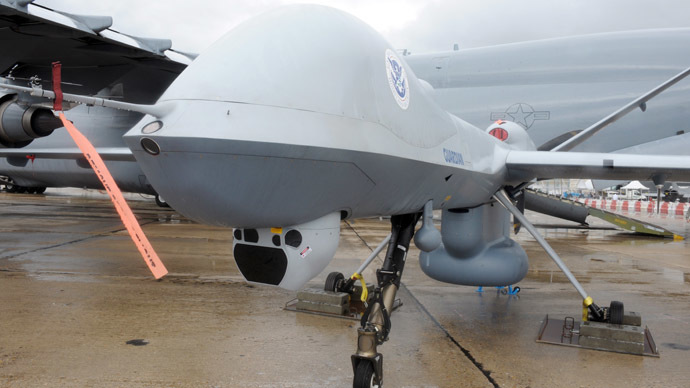DARPA turns aging drones into WiFi hotspots for troops

Rather than simply toss aside aging surveillance drones, the Pentagon has announced plans to use them as high-speed Wi-Fi hot spots for troops in remote regions of the world.
In a release dated April 7, the military’s Defense Advanced Research Projects agency (DARPA) stated it’s looking to mount older fleets of drones with wireless internet capable of transmitting one gigabyte of data per second, roughly the equivalent of modern 4G cellular networks.
According to Ars Technica, the agency will repurpose its fleet of RQ-7 Shadow Drones – originally deployed on surveillance missions in Iraq – so that they can be used to ensure troops in remote areas around the globe have the same access to mission data, intelligence, and information that other units do in more connected regions.
“We’re pleased with the technical achievements we’ve seen so far in steerable millimeter-wave antennas and millimeter-wave amplifier technology,” DARPA program manager Dick Ridgway said in a statement. “The novel networking approaches needed to maintain these high-capacity links [will be the] key to providing forward deployed units with the same high-capacity connectivity we all enjoy over our 4G cell-phone networks.”
As noted by The Verge, this project’s first phase actually began back in 2012, with the second one beginning last month and a third planned for sometime in the future. The 11-foot Shadow Drones will be equipped with an 8-inch pod, specifically designed to hold all the necessary parts to ensure internet connectivity for up to nine hours.
“The Phase 1 field tests were very successful," Ridgway said to Ars Technica. "The pointing, acquisition, and tracking algorithms were very fast, with some showing millimeter-wave link alignment in just a few seconds." This will "enable the formation of a high-capacity backhaul network between aerial and ground platforms."
Of course, DARPA isn't the only group looking to equip the skies with an internet connection. As RT reported last month, Facebook announced plans “to deliver the internet to everyone” using drones and satellite technology. The initiative falls under the title of “Internet.org,” and CEO Mark Zuckerberg hopes to bring up to five billion online who currently don’t have access.
Unlike this initiative, though, DARPA’s project probably does not have much potential for civilian use, though Ars Technica reports the technology could be useful to rescue workers in emergency scenarios or potential disasters.














